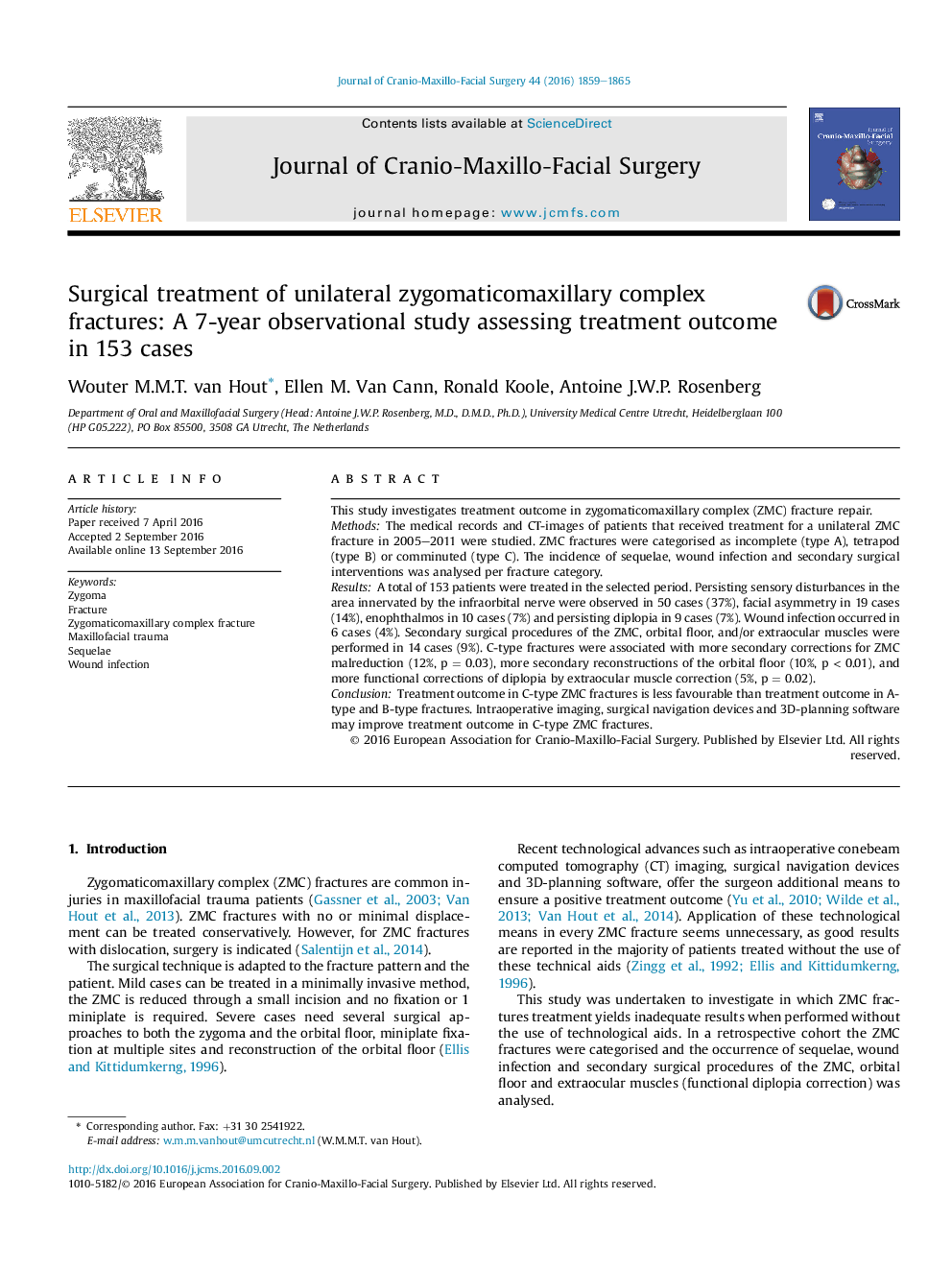| Article ID | Journal | Published Year | Pages | File Type |
|---|---|---|---|---|
| 5640377 | Journal of Cranio-Maxillofacial Surgery | 2016 | 7 Pages |
This study investigates treatment outcome in zygomaticomaxillary complex (ZMC) fracture repair.MethodsThe medical records and CT-images of patients that received treatment for a unilateral ZMC fracture in 2005-2011 were studied. ZMC fractures were categorised as incomplete (type A), tetrapod (type B) or comminuted (type C). The incidence of sequelae, wound infection and secondary surgical interventions was analysed per fracture category.ResultsA total of 153 patients were treated in the selected period. Persisting sensory disturbances in the area innervated by the infraorbital nerve were observed in 50 cases (37%), facial asymmetry in 19 cases (14%), enophthalmos in 10 cases (7%) and persisting diplopia in 9 cases (7%). Wound infection occurred in 6 cases (4%). Secondary surgical procedures of the ZMC, orbital floor, and/or extraocular muscles were performed in 14 cases (9%). C-type fractures were associated with more secondary corrections for ZMC malreduction (12%, p = 0.03), more secondary reconstructions of the orbital floor (10%, p < 0.01), and more functional corrections of diplopia by extraocular muscle correction (5%, p = 0.02).ConclusionTreatment outcome in C-type ZMC fractures is less favourable than treatment outcome in A-type and B-type fractures. Intraoperative imaging, surgical navigation devices and 3D-planning software may improve treatment outcome in C-type ZMC fractures.
